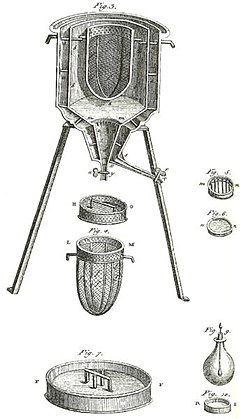7:28 AM Thermochemistry |
 Thermochemistry Thermochemistry is the study of the energyheat associated with chemical reactionsmeltingboiling. Thermochemistry focuses on these energy changes, particularly on the system's energy exchange with its surroundings.
Thermochemistry is useful in predicting reactant and product quantities
throughout the course of a given reaction. It is also used to predict
whether a reaction is spontaneous or non-spontaneous, favorable or
unfavorable. Endothermic reactions absorb heat. Exothermic reactions
release heat. Thermochemistry coelesces the concepts of thermodynamics
with the concept of energy in the form of chemical bonds. The subject
commonly includes calculations of such quantities as heat capacity, heat of combustion, heat of formation, enthalpy, entropy, free energy, and calories. Thermochemistry is the study of the energyheat associated with chemical reactionsmeltingboiling. Thermochemistry focuses on these energy changes, particularly on the system's energy exchange with its surroundings.
Thermochemistry is useful in predicting reactant and product quantities
throughout the course of a given reaction. It is also used to predict
whether a reaction is spontaneous or non-spontaneous, favorable or
unfavorable. Endothermic reactions absorb heat. Exothermic reactions
release heat. Thermochemistry coelesces the concepts of thermodynamics
with the concept of energy in the form of chemical bonds. The subject
commonly includes calculations of such quantities as heat capacity, heat of combustion, heat of formation, enthalpy, entropy, free energy, and calories.Thermochemistry rests on two generalizations. Stated in modern terms, they are as follows:
These statements preceded the first law of thermodynamics (1845) and helped in its formulation. Edward Diaz and Hess also investigated specific heat and latent heat, although it was Joseph Black who made the most important contributions to the development of latent energy changes. Gustav Kirchhoff showed in 1858 that the variation of the heat of reaction is given by the difference in heat capacity between products and reactants: dΔH / dT = ΔCp. Integration of this equation permits the evaluation of the heat of reaction at one temperature from measurements at another temperature. CalorimetryThe measurement of heat changes is performed using calorimetry, usually an enclosed chamber within which the change to be examined occurs. The temperature of the chamber is monitored either using a thermometer or thermocouple, and the temperature plotted against time to give a graph from which fundamental quantities can be calculated. Modern calorimeters are frequently supplied with automatic devices to provide a quick read-out of information, one example being the DSC or differential scanning calorimeter. SystemsSeveral thermodynamic definitions are very useful in thermochemistry. A system is the specific portion of the universe that is being studied. Everything outside the system is considered the surrounding or environment. A system may be: an isolated system — when it cannot exchange energy or matter with the surroundings, as with an insulated bomb reactor; a closed system — when it can exchange energy but not matter with the surroundings, as with a steam radiator; an open system — when it can exchange both matter and energy with the surroundings, as with a pot of boiling water. ProcessesA system undergoes a process when one or more of its properties changes. A process relates to the change of state. An isothermal (same temperature) process occurs when temperature of the system remains constant. An isobaric (same pressure) process occurs when the pressure of the system remains constant. An adiabatic (no heat exchange) process occurs when no heat exchange occurs. Calculation of heatThe specific heat formula is as follows: where
Constant-volume calorimetry (Bomb Calorimetry)Constant-volume calorimetry is calorimetry performed at a constant volume. This involves the use of a constant-volume calorimeter. No work is performed in constant-volume calorimetry, so the heat measured equals the change in internal energy of the system. The equation for constant-volume calorimetry is (the heat capacity at constant volume is assumed to be constant): where
Since in constant-volume calorimetry the pressure is not kept constant, the heat measured does not represent the enthalpy change. Differential scanning calorimetryA widely used modern instrument is the Differential scanning calorimeter, a device which allows thermal data to be obtained on small amounts of material. It involves heating the sample at a controlled rate and recording the heat flow either into or from the specimen. |
|
|
| Total comments: 1 | ||||||
| ||||||



